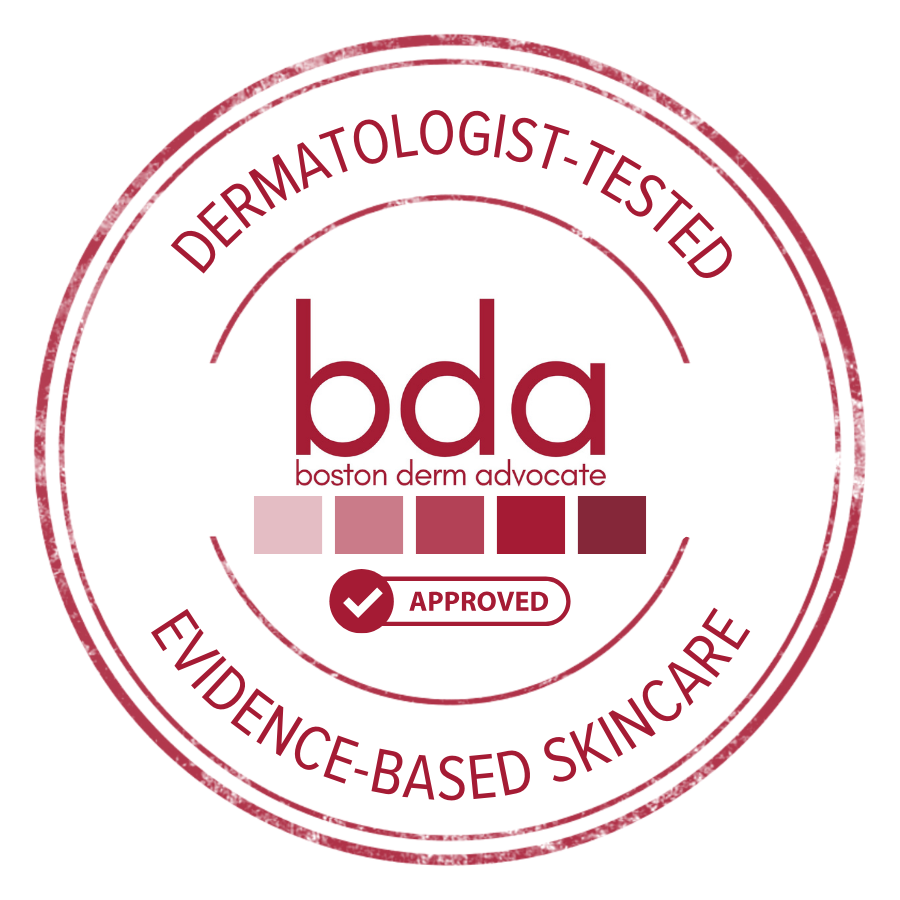Skincare Glossary
Unmasking Skincare Lingo:
Your A-Z Glossary to Decode the Beauty Buzzwords
-
Lasers that vaporize thin layers of skin through intense heating to promote collagen remodeling.
-
A medication taken orally to treat psoriasis that should be avoided during pregnancy due to risk of birth defects.
-
Water-soluble acids used in skincare to brighten the skin.
-
Indented scars caused by destruction of collagen and fat under the skin's surface resulting in depressions.
-
An acid that helps reduce inflammation, hyperpigmentation, and acne.
-
An ingredient used in topical acne treatments that kills acne-causing bacteria.
-
Oil-soluble acids, like salicylic acid, that penetrate deeply into pores, helping with acne and skin texture.
-
Lipids that help form the skin's barrier and help skin retain moisture.
-
Sunscreens that work by absorbing UV rays, converting them into heat, and releasing them from the skin.
-
A protein that provides skin with structure, resulting in a firm and youthful appearance.
-
Refers to ingredients that can block pores and promote acne formation.
-
Anti-inflammatory medications often used to decrease redness, swelling and inflammation post-procedures.
-
A handheld device with many fine microneedles used to perform microneedling. Must be properly sterilized between uses.
-
Products tested by skin specialists (dermatologists) to ensure they don't cause irritation or adverse reactions.
-
The shedding and peeling of outer layers of skin.
-
Lasers that deliver light in small columns to delicately treat the skin without significant downtime.
-
A type of AHA that improves skin texture by exfoliating the skin.
-
Thick, raised scars that remain within scar borders.
-
A molecule used in skincare products that is advertised to help retain skin moisture, giving a youthful, plump appearance.
-
Supposedly less likely to cause allergic reactions.
-
Firm, raised scars that extend beyond the original injury borders and are difficult to treat.
-
A form of hyperpigmentation that causes brown patches typically on the face, commonly this occurs during pregnancy triggered by hormonal changes.
-
Instrument containing rows of thin needles that penetrate the dermis to a uniform depth, creating a controlled skin injury that leads to improved healing and cosmesis.
-
Sunscreens that use minerals like zinc oxide or titanium dioxide to reflect UV rays away from the skin.
-
A form of vitamin B3 that is advertised to reduce inflammation and redness, and improve skin tone.
-
Refers to products that are designed not to block pores.
-
Preservatives used in cosmetics to prevent the growth of bacteria and mold.
-
Small proteins that are touted to stimulate collagen production, helping the skin to appear more youthful and healthy.
-
The skin region around the eye orbit.
-
The coloring of a person's skin due to the production of melanin.
-
Plasma extracted from the patient’s blood that contains concentrated growth factors to enhance healing.
-
Redness of skin that remains after an inflammation (e.g. acne lesion or other inflammatory condition) resolves.
-
Use of electromagnetic energy to generate heat and stimulate tissue remodeling.
-
A derivative of vitamin A that helps to turn over skin cells and reduce signs of aging.
-
Very similar to retinol, but prescription strength
-
Oil glands found all over the skin except for the palms and soles.
-
Skin that easily reacts to different products or environmental factors, resulting in redness, itching, or other types of discomfort.
-
A skincare product with high concentrations of active ingredients, designed to deeply penetrate the skin.
-
A measure of how well a sunscreen will protect skin from UV rays.
-
A hydrating ingredient derived from squalene, a compound produced naturally by our skin.
-
A procedure to detach tethered, indented scars from deeper tissues to raise them.
-
Sunscreen that contains a small amount of tint to offset the white cast that can be left by mineral sunscreens.
-
An antioxidant that protects skin from environmental damage and brightens the complexion.
-
The chalky film left on the skin by some sunscreen formulas, particularly those containing mineral ingredients.

